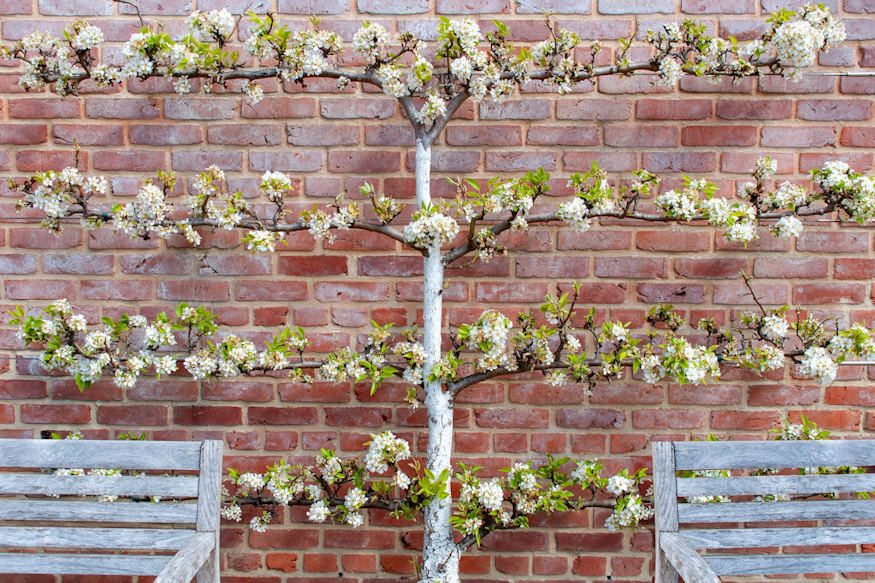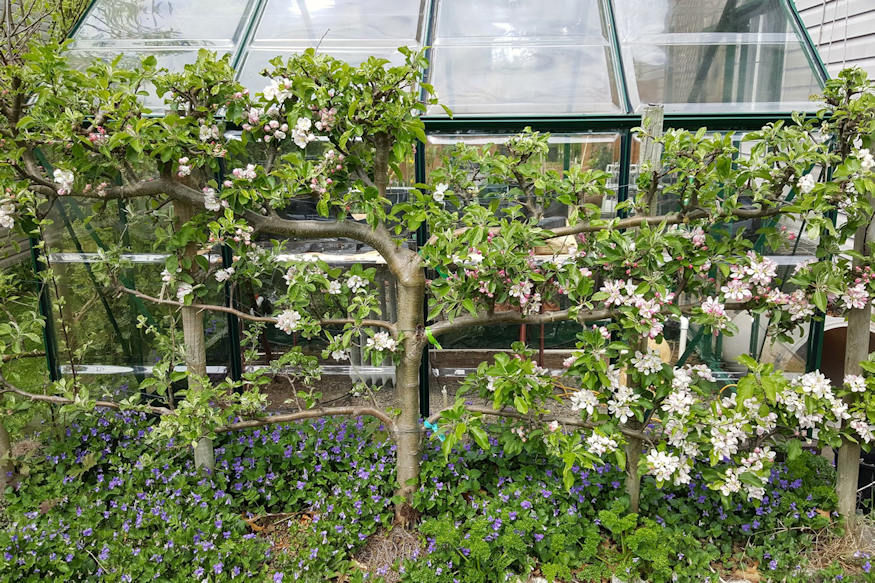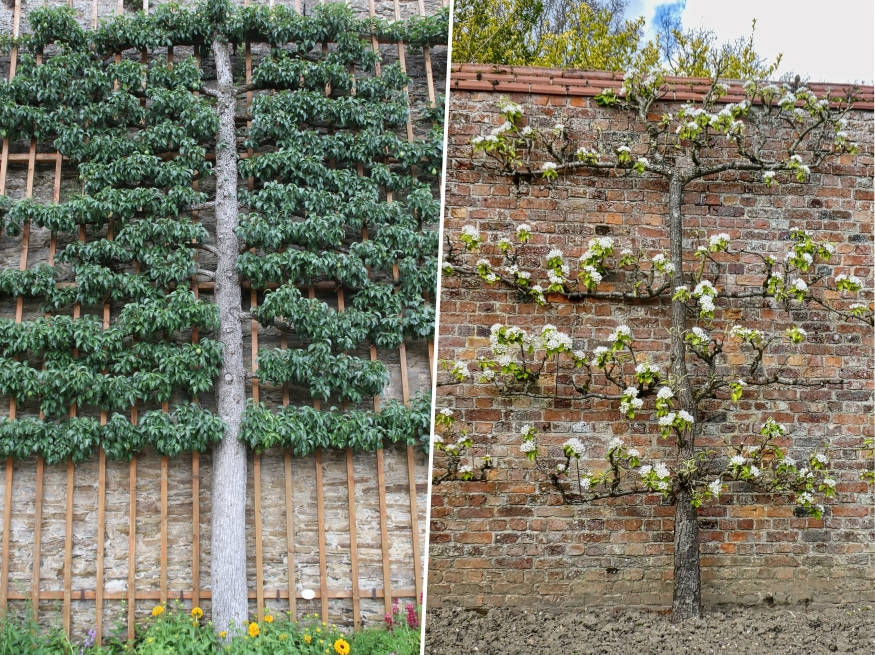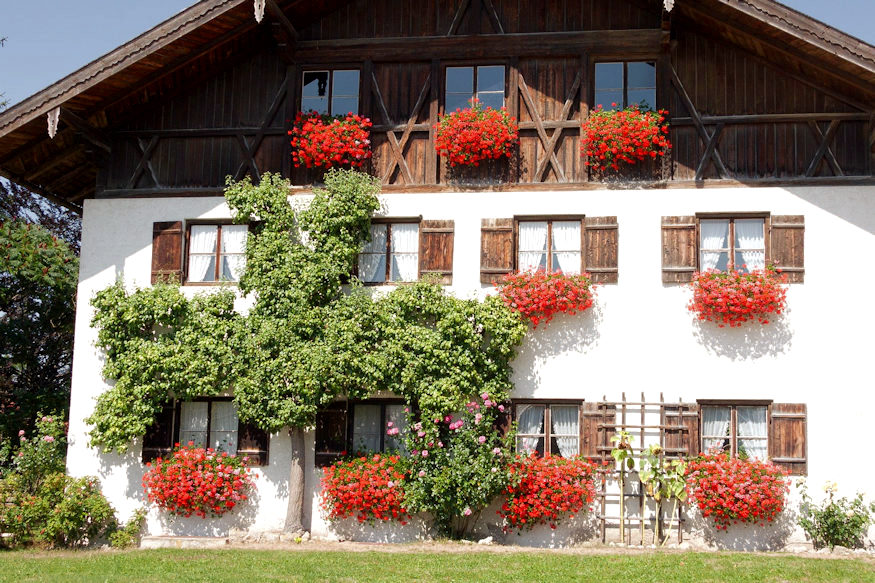Discover the art of espalier, a captivating gardening technique that transforms plants into living works of art. In this article, we delve into the fundamentals of espalier, exploring how this ancient practice combines beauty, functionality and space optimization in your garden.
Espalier is a gardening technique that involves training plants, usually fruit trees or ornamental plants, to grow flat against a wall, fence or trellis in a specific pattern. This technique not only creates a visually appealing display but also maximizes limited garden space and allows for easier maintenance and harvesting.

Some key points to know about espalier
1. Plant Selection
Many fruit trees, such as apples, pears, peaches and citrus, are well-suited for espalier due to their flexible branches. However, certain ornamental plants, like roses, wisteria, camellias and firethorn, can also be trained using this technique.

2. Tools and Supplies
Pruning Tools: Essential pruning tools include sharp hand pruners for precise cuts, loppers for thicker branches and a pruning saw for larger cuts. These tools will help you shape and maintain your espaliered plants.
Gloves and Safety Gear: Working with plants and tools may require the use of gloves to protect your hands. Depending on the scale of the project, consider using safety goggles, ear protection or a dust mask as needed.
Support Structure: Depending on the design and size of your espalier, you may need a sturdy support structure such as a wall, fence or trellis. This will serve as the framework for the plant’s branches to grow against. Ensure that the structure is sturdy and securely anchored, and is capable of withstanding the weight and growth of the chosen plant.
Wire and Ties: Galvanized or stainless steel wire is commonly used for espalier as it is durable and weather-resistant. Choose a gauge that can support the weight of the branches. Additionally, you may need soft garden ties, such as flexible rubber or plant-friendly twine, to secure the branches to the wire.
Eye Bolts or Screw Eyes: These can be used to attach the wire to the support structure. Ensure they are strong and firmly anchored into the wall or fence.
Level and Measuring Tape: These tools will help you ensure that your espalier is straight and evenly spaced. Use a level to check the vertical alignment of the branches and a measuring tape to maintain consistent distances.
Fertilizer and Mulch: Espaliered plants will benefit from regular fertilization to support healthy growth and fruit production. Consult with a local garden center to determine the appropriate fertilizer for your specific plant species. Mulch can help retain moisture, suppress weeds and improve soil health.
Watering Equipment: Depending on your irrigation system and the location of your espalier, you may need watering cans, hoses or drip irrigation supplies to ensure your plants receive adequate moisture.

3. Pruning and Training
Espalier involves pruning and training the plant’s branches to grow horizontally and vertically along the support structure. Regular pruning is crucial to maintain the desired shape and encourage fruit production. It’s essential to understand the growth habits and natural form of the plant you’re working with to guide its branches appropriately.

4. Patterns
There are several common patterns used in espalier, including
- cordon (single horizontal branches),
- fan (multiple horizontal branches fanning out),
- candelabra (main vertical stem with horizontal branches), and
- Belgian fence (interwoven diagonal branches).
Each pattern creates a unique visual effect.

5. Sunlight and Spacing
Espaliered plants require sufficient sunlight for optimal growth and fruit production. Ensure that the chosen location receives at least six hours of direct sunlight per day. Additionally, consider the spacing requirements for the specific plant species to ensure proper airflow and prevent overcrowding.

6. Maintenance
Regular maintenance is necessary to keep an espalier looking tidy and healthy. This includes pruning to remove unwanted growth, training new shoots along the support structure, and providing adequate watering, fertilization and pest control.
Remember, espalier can be a long-term project that requires patience and ongoing care. It’s important to research and understand the specific needs of the plant you plan to espalier, as different species may have different requirements. Consulting gardening books, online resources or seeking advice from experienced gardeners can provide additional guidance and inspiration for your espalier endeavors.









